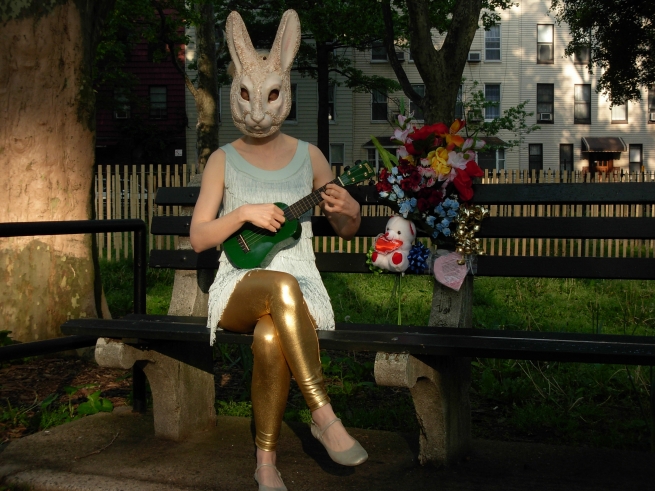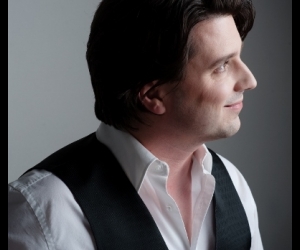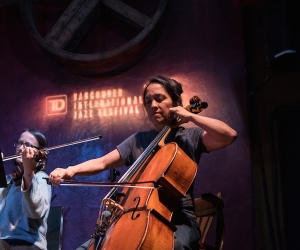
The centenary of Dadaism is only three short years away, but there’s still time for curators and arts organizations across the world to program fitting tributes to the full multiplicity of artists involved in the movement. Irish radio, for example, will be honouring Dublin’s Dermot O’Reilly, Kevin Leeson, and Brian Sheridan, the Guinness Dadaists whose sound art anticipates such seminal works as Kurt Schwitters’ Ursonate by at least two years. And not only Dadaism: there’s a rich seam in Irish music to be mined, the tin-whistle and uilleann-pipe-drone minimalism of Padraig Mac Giolla Mhuire, who was creating work decades before Steve Reich and Philip Glass; or the ineffably strange soundworks of Caoimhín Breathnach, an artist who used to bury his cassette tapes and to write his diaries in Ogham, the mysterious script of ancient Irish.
There’s one snag, though: there’s no such thing as the Guinness Dadaists. Neither they nor any of the people just listed have ever existed outside the mind of Dublin-born composer Jennifer Walshe. Irish Dada is her creation, as is the minimalist Dordán (Irish for drone) project, and so too the Breathnach archive (his name translates as ‘Kevin Walshe’) that Walshe inherited when she bought a house in the west of Ireland. Which isn’t to say that they don’t have an artistic existence. They do. Together with a host of others, who include bearded drag queen Niall Quinlan as the Dowager Marchylove (a sound poet with a line of Edwardian frocks) and the grotto-builder Violetta Mahon, with her fingerless concert-pianist friend Flor Hartigan, they are manifestations occurring in Walshe’s extraordinary music and performance work, a meticulous practice that extends the creation of characters, voices, and events into a dizzying mise-en-abîme.
It’s not simply a sound-world: books, catalogues, artifacts, and recordings are also produced: Grúpat, a group show in Dublin’s Project Arts Centre for nine (fictitious) artists in 2009 yielded two CDs: Songtags and the Joycean-sounding The Wasistas of Thereswhere. Another work, The Legend of the Fornar Resistance, a spin-off fantasy book “by” Grúpat’s The Parks Service, spins into H. P. Lovecraft territory and is illustrated in Biro with immense love and care by Caroline Walshe, the composer’s artist sister. “It’s total nerd-boy stuff,” says Walshe, herself a big fan of science fiction and parallel-world fiction, with evident delight. Such is the seductive power of Walshe-world, the ground can shift under your feet. Google “Mahon” or “Breathnach,” or “Dordán” and results appear on your computer screen. But what are we seeing? Are they real? Or are they really Walshe and—like the Wikipedia entry on the Irish Dadaists (it’s really there)—pieces of misinformation created by her as part of her larger project? It’s difficult to say: the slippage between the real and the unreal is all part of Walshe’s great game, and it is one that extends to her own appearance. Stepping away from her alter egos and into the day-to-day performance of everyday life, Walshe is a trim blonde woman of medium height; but in her work she shifts to a multiplicity of different forms: bearded drag queen, ukulele-playing chanteuse and neatly coiffed vamp.
Walshe was born in 1974 in Dublin and was a trumpeter before leaving for music school in Scotland (the shift from player to composer was, she says, “very organic; once I found out that I could shift into composition, I knew without question, that was what I wanted to do”), and subsequently the U.S., where she took a doctorate in composition.
“I use alter egos partly because they are so liberating,” says Walshe, speaking in her London flat. She has been resident in the U.K. since taking up the chair of research at Brunel University four years ago, a job that she describes as “getting back to the world” after the isolation that full-time composition often involves. “Every artist since the year dot has been using alter egos for exactly this reason, because they do things that they would not normally do under their own ego,” she says, before adding the caveat: “I must say that Jennifer Walshe is a persona as much as Flor Hartigan or Violetta Mahon are personae, in terms of being a social construct and being regarded in a certain way.”
This is important, because one of the strands in all of Walshe’s work is the importance of social persona and how to subvert it. There was nothing sweet or girly about the Barbie dolls that starred in XXX Live Nude Girls, Walshe’s portable opera for voice, puppeteers, and nude dolls that bashed and brutalized each other: one of its origins is Aristophanes’ Lysistrata; but another one is the profoundly ambivalent feelings girls act out with their dolls, and later with each other. Violence also features in Nature Data, Walshe’s 2010 album for solo voice, in which one section—a teenage girl’s moony monologue about kissing Tom Cruise—is bookended by a thirty-minute piece called i: same person / ii: not the same person, which combines strange, squawking surface sounds with a palate of sobs, gasps, and strangulated terror. As a teacher in improvisation classes, she’s aware that she needs to articulate how social constructs can constrict. “I really enjoy teaching, but [with the women students] you have to do a lot of work to make them sing loud enough,” she says. “They often won’t check the mike levels, or will sound very shy. At times, they are doing incredible work, but you have to say to them, ‘You have to take responsibility.’ If boys are playing louder than you, turn around and say, ‘Hey! Let’s level up so we’re on the same dynamic.’ ”
Walshe’s own music has a broad and dynamic range. She improvises vocally in a duo with composer–performer Panos Ghikas and in another, called Ma La Pert, with Tony Conrad, who also collaborated with her on the Irish minimalism project. She has composed orchestral works such as 2009’s Hotel Chelsea and larger works such as The Geometry (2010), an experimental chamber opera for three musicians and four groups of performers, which uses video screens to shift the audience’s focus. Walshe’s more recent Die Taktik is her largest single production to date, a multimedia opera for six musicians and electronics, chorus, and three dancers, commissioned by Stuttgart’s Junge Oper and premiered to great acclaim in 2012.
“Die Taktik had no proper plot,” says Walshe of the piece that used three huge video screens “like windows into another world.” Die Taktik (Tactics) reflects many of the hugely wide-ranging interests that Walshe packs into her work: there is a slightly futuristic feel to its brilliantly flamboyant theatricality, with its giant video screens suggesting the possibilities of technologically enhanced lives through avatars; and, of course, there is fast, multitextured music that draws on many sources: voices, electronics, and acoustic instrumentation. Above all, there are the performers on the stage itself: “I am interested in bodies in space,” says Walshe, meaning performers in a spatial relationship with the world, and the world she creates is a complex one, in which past, present, and future collide, with extraordinary results. The tech-heavy opera scenario might summon up comparisons with Robert Ashley, a composer whom Walshe admires tremendously. But it’s not apposite here. Ashley is about text, Walshe points out, but when a listener is not anchored to a text, as is the case with the slipperiness of Die Taktik, that listener is catapulted into an altogether trickier world. Some of Walshe’s solo works—Nature Data, for example—that use extended vocal techniques pull to the limits what it means to create a work and to make a noise, and place her firmly in a lineage of experimental music that includes John Cage, Meredith Monk, and—to return to Dada sound poetry—Schwitters himself.
These are all prodigiously adept works, but arguably, it is in the idea of wider compositional techniques that Walshe’s works have their greatest resonance: she is a musician who values the context of music, and her pleasure is to subvert that in order to accentuate certain meanings while creating certain others. One project at New York’s Tenement Museum in 2010 included creating and placing what Walshe calls “sound reliquaries” inside the apartment of a family of Irish immigrants named Moore, who once lived in the Orchard Street building. Each reliquary contained sounds from Ireland—“ice-cracking in a river, a voice telling stories by the fire”—and one cannot ignore the poetic gesture of a present-day Irish person imparting to other Irish people from the past some aspects of comfort and peace in difficult surroundings.
If the reliquaries were a gift to ghosts, then the Dordán project was a wishful completion of something that is yet unfinished. It was, to some extent, a rewriting by Walshe of her collaborator Tony Conrad’s experience while working with La Monte Young and the Theatre of Eternal Music in the ’60s. “There are a lot of recordings that Tony played on and La Monte is sitting on them,” Walshe says, referring to Young’s famous refusal to release a lot of tapes. “Tony said to me, ‘It’s kinda crazy that we can’t hear them!’ and I said,”—Walshe’s voice drops to a conspiratorial whisper—“what if I claim that the Irish invented minimalism? And he said, ‘Yeah!’”
“I didn’t make a political decision when I decided to do Grúpat,” Walshe says. “I didn’t sit down and think, right, it’s about gender and all these things, it was to me an instinctual way of working. I had models: I had Flann O’Brien, who wrote as Myles na Gopaleen, and it seemed like a normal thing for me to do. You know, Prince is Prince; he is also the Symbol, the Artist Formerly Known as Prince. It’s flexible. Björk doesn’t change identity, but all her work involves radical shifts in sound and concept, Stravinsky does this, too. [This flexibility] is what keeps me interested.”
Like other historical hoaxes—think of the Australian surrealist poet Ern Malley and, more recently, William Boyd’s lost artist, Nat Tate—Walshe’s creations can take on unanticipated aspects. One Irish broadcaster who had seen the Wiki entry on the Guinness Dadaists went on a long trail to track them down before contacting Walshe, “at one of [her] many spam e-mails,” as someone who had uploaded examples of their artwork. “I wrote back and said, my name is Jennifer Walshe and I am an artist and I do these projects with alter egos. I made them all up. And he replied, ‘Awesome! Let’s do a documentary on them!’ And we are.”
“I ’fess up instantly when people ask me,” she continues. “I have never lied to anyone’s face. If someone says, ‘Tell me about Violetta Mahon,’ I will talk about her as if she was real. If someone says, ‘I smell a fish,’ I reply, ‘You’re totally correct,’ and that’s the way I operate. I think Irish people have no problem with this at all. There’s an Irish openness to subterfuge.” Walshe cites the Seamus Heaney story about the Irishman who went on Mastermind, the long-running quiz show on BBC TV. “He wouldn’t answer a single question, and finally someone said, ‘That’s right! Don’t tell the bastards anything!’”
The artifacts, sonic and otherwise, generated by Walshe and attributed to her created personalities are part of what she terms “the historical documents of the Irish avant-garde.” In other words, their invention is a necessity because they are part of Walshe’s own pre-history. “And also it’s maybe to do with the storytelling,” she says. “When someone says they’re going to tell us a story, we accept that they are going to embroider it, but that’s fine as it probably makes for a better story. Culturally, that’s ok. Irish storytelling is hugely important and Irish people frame their existence and the way they present themselves through stories. My feeling is that these should be parallel histories that should exist. I need them to exist because they justify my existence as an artist. It makes sense to me that these people were my ancestors.”
The work of the Guinness Dadaists is only just coming to light, but if you look at the fragment of sound poetry that appears on Wikipedia’s Dada page, on the left you will see a three-word phrase, written in Irish, that is pronounced as something close to Jell-diddly-idle. And even as a post hoc invented precedent for Schwitters’ “Fümms bö wö tää zää Uu,” it’s a good one.
Audio: Toy Adonis (2013). Improvised by Jennifer Walshe and Panos Ghikas. Image: Jennifer Walshe. Image by: Blackie Bouffant.


